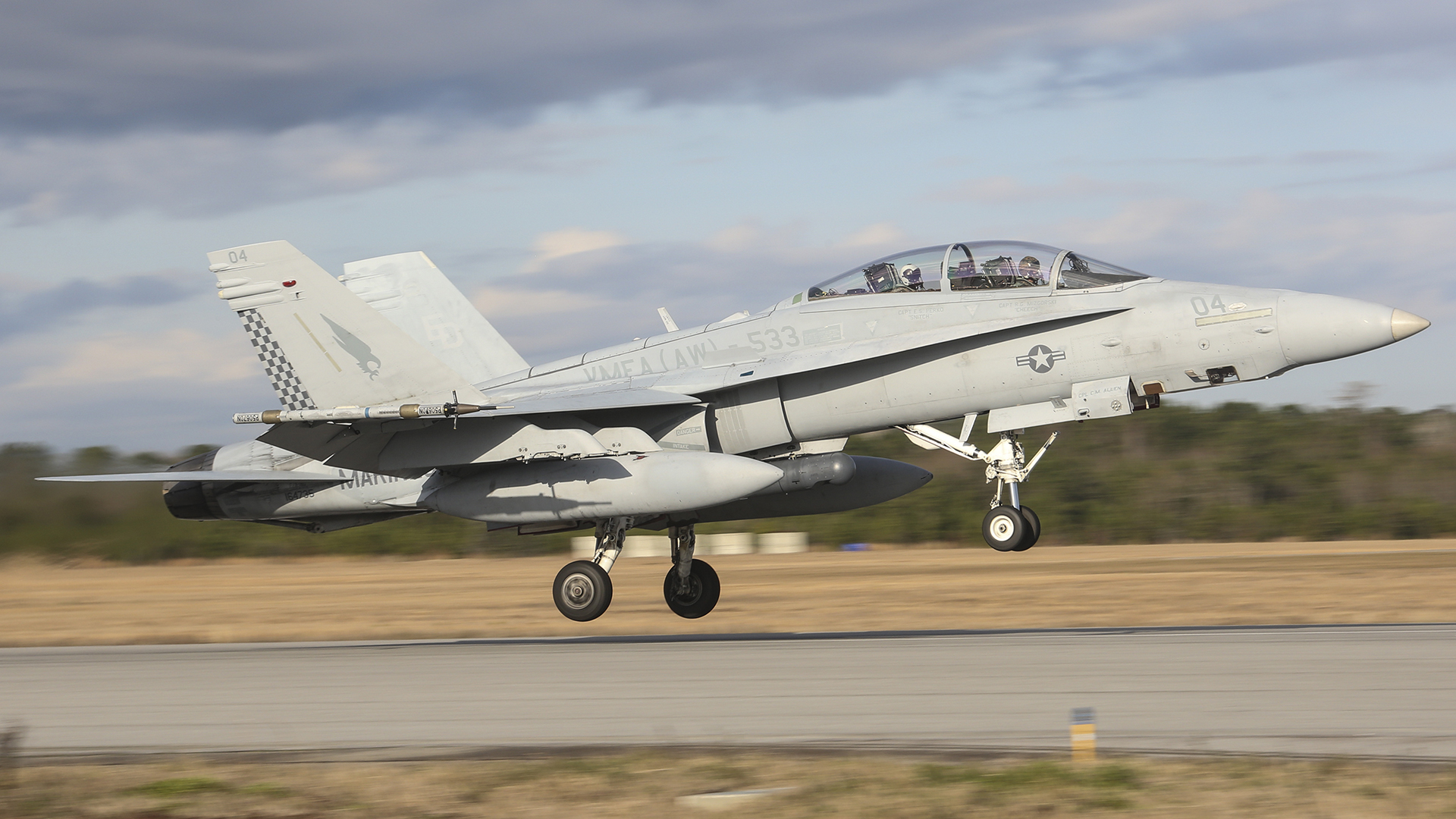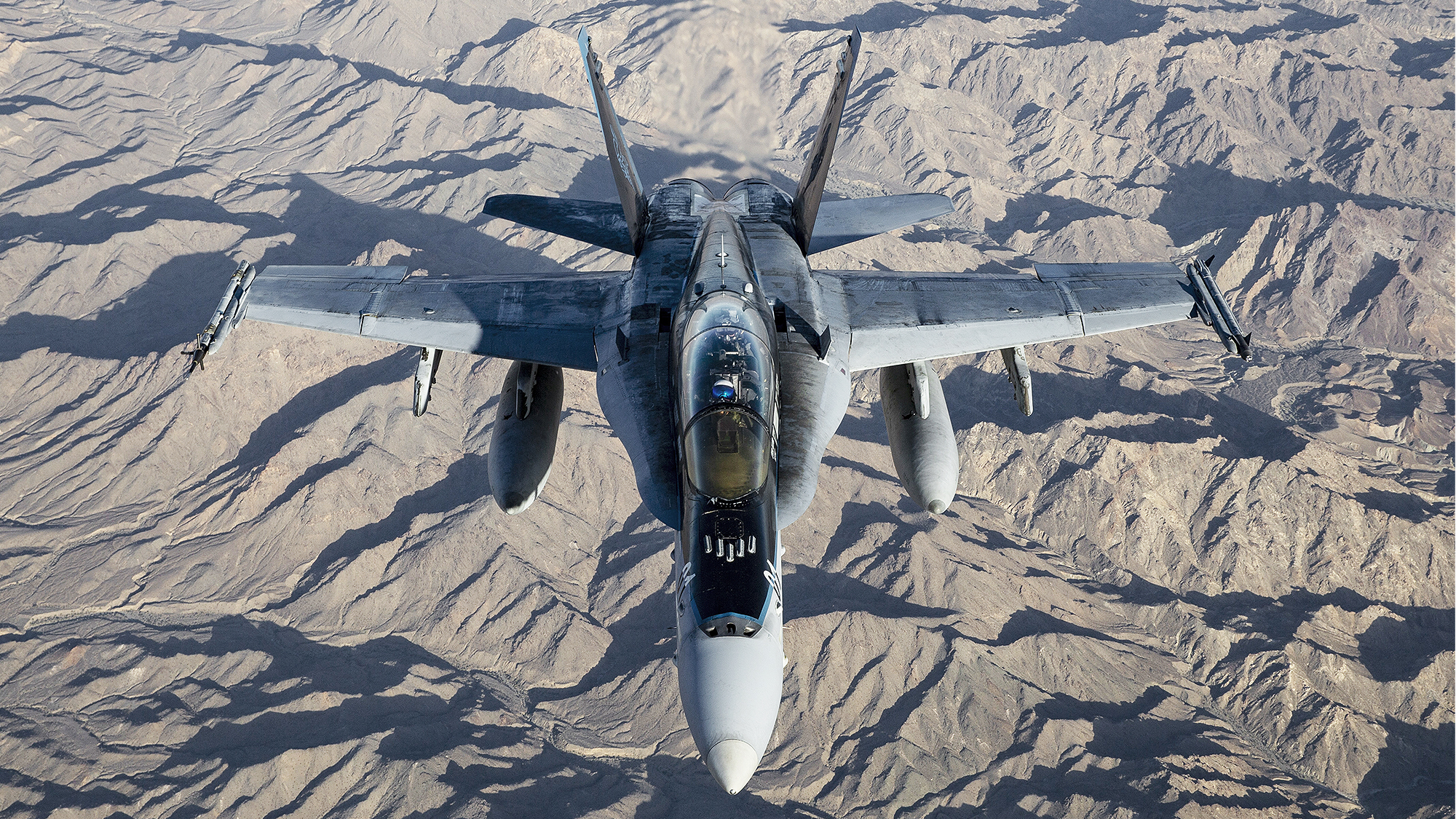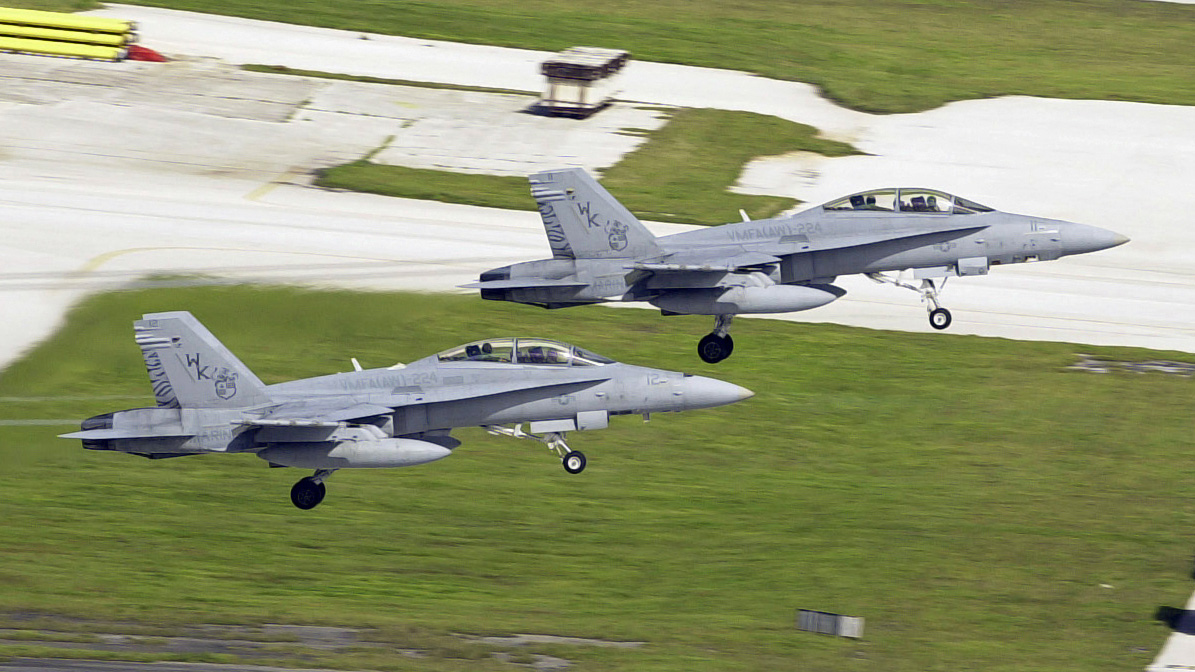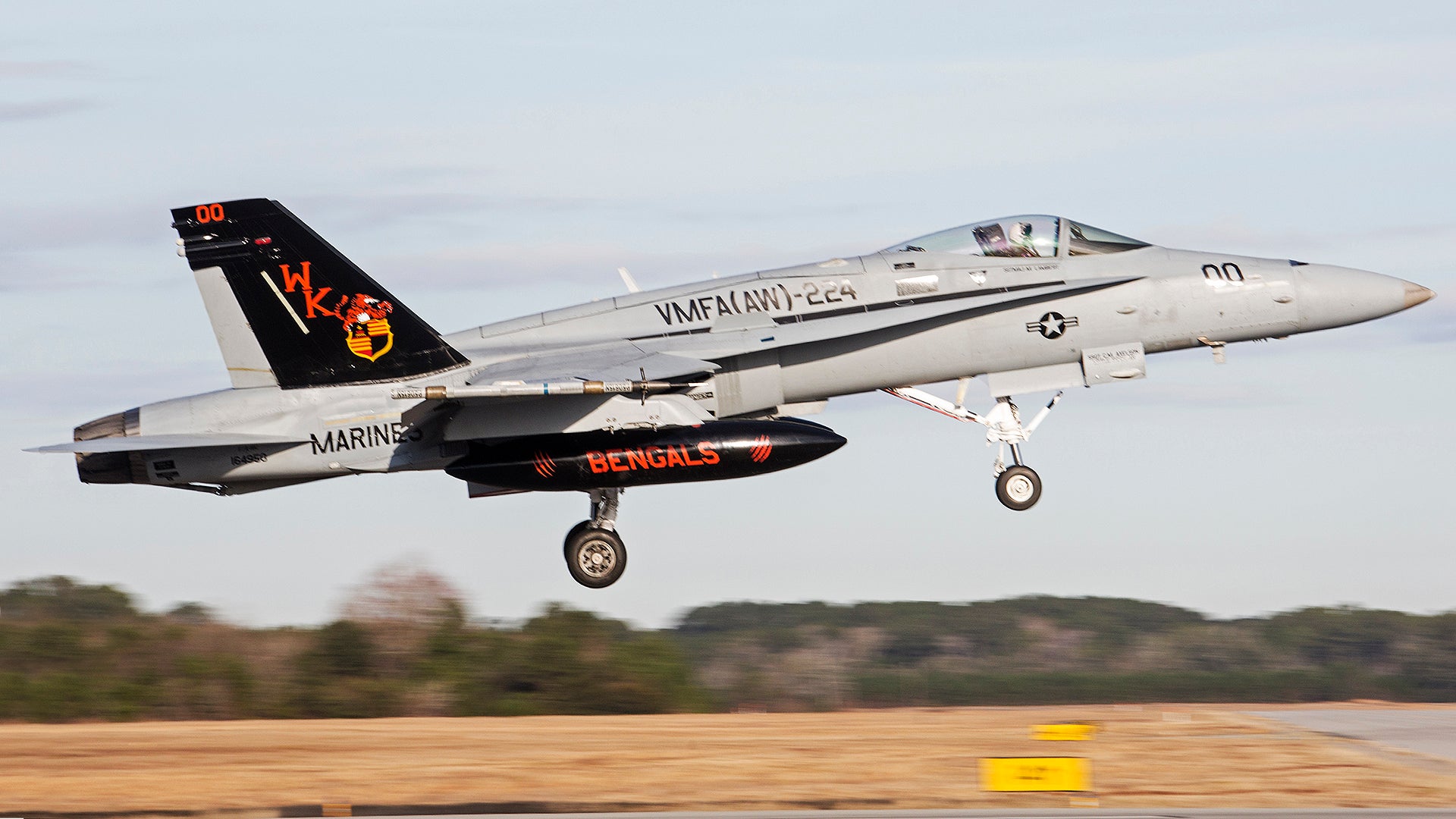Single-seat F/A-18C Hornets have started appearing in Marine all-weather strike fighter squadrons, designated VMFA(AW)s, which have traditionally been equipped with two-seat F/A-18Ds. It hasn’t been made clear exactly what is going on with what is truly an odd sight for military aviation aficionados to see—single-seat Hornets flying with the designations and motifs of famed two-seat VMFA(AW) squadrons. The War Zone was just as curious as anyone about the peculiar arrangement, although we had a good idea of how and why it came to be. But still, the move, if permanent, is a major one for the USMC and its four VMFA(AW) squadrons, so we reached out to the Corps to get the bottom line on just how extensive and long-lasting the new squadron structure may be. The information we received from our inquiry describes a far more widespread metamorphosis that is happening across the entire Marine Corps’ Hornet enterprise.
Before we get to that, we need to make it clear that the two-seat Hornets in VMFA(AW) units are not trainers, they are fully missionized with their rear cockpits outfitted with interfaces and tactical displays for dedicated Weapon Systems Officers (WSOs) to use. Historically speaking, these unique squadrons, which are exclusively land-based, have taken on more complex missions, including the Forward Air Control (Airborne) role, as well as the tactical reconnaissance mission. The latter of which involves using the small number of specially modified F/A-18Ds—a dozen in total, three serving in each VMFA(AW) squadron—equipped with the Advanced Tactical Airborne Reconnaissance System (ATARS) in their noses.

The Marines’ four VMFA(AW) units can still perform more traditional Hornet strike fighter missions, as well, and all weather deep strike is clearly also a part of their repertoire. Now, as the Navy divests much of its Legacy Hornet inventory, the USMC is getting an influx of very badly needed fresher F/A-18C airframes. This is a great thing for the Corps, but it has to be somewhat bittersweet for the VMFA(AW) squadrons who will no longer live by the long-standing two crew concept of operations that dates back half a century to early Marine A-6 Intruder operations.

Yet the changes as a result of this shuffling of assets aren’t as simple as swapping out tired single-seat Hornets for less worn single-seat Hornets, or even porting over a single-seat Hornet to a VMFA(AW) squadron temporarily due to fleet management requirements, which has occasionally occurred with non-deployed units in the past. Here is what Captain Christopher Harrison, a Communications Strategy Officer for the Marine Corps Communications Directorate, shared with us about the changes to the aircraft inventories of VMFA(AW) squadrons:
“As the F/A-18 nears the end of its service life, the number of F/A-18Ds available in its inventory will start to equal the number of F/A-18Cs. Known as F/A-18 composite squadrons, Marine Aircraft Group (MAG) commanders began placing F/A-18Cs in VMFA(AW) squadrons while at the same time introducing F/A-18Ds into VMFA squadrons. A mix of F/A-18Cs and F/A-18Ds provides the MAG with increased flexibility in resourcing squadrons while simultaneously spreading the more proficient mission skills associated with two-seat cockpits, such as an airborne forward air controller (FAC(A)), to more squadrons.
The F/A-18 community is comparable in readiness to the AV-8B community, and the materiel condition of the F/A-18D fleet is nearly the same as the F/A-18C fleet. However, as the Marine Corps progresses through the next decade, it will have a larger pool of low-flight-hour F/A-18Cs from the Navy as the F/A-18D reaches the end of its service life sooner.
The Marine Corps is not prioritizing F-35B/C replacement of the F/A-18D (or F/A-18C) over the AV-8B. In accordance with the 2019 Marine Corps Aviation Plan, we are replacing both F/A-18 and AV-8B squadrons concurrently, alternating back and forth between platforms over the next decade until the last AV-8B squadron transitions in Fiscal Year (FY) 2027 and the last F/A-18 squadron transitions in FY 2030. In any case, the F/A-18 will remain the primary TacAir bridging platform to the F-35B/C throughout this transition.”

There is some big news in that statement. First off, the very idea of VMFA(AW) squadrons seems to be heading toward its demise within USMC as single-seat VMFA squadrons are also getting some F/A-18Ds redistributed to them as the fleet is consolidated. In addition, Captain Harrison adds further evidence to the notion that there is no prioritization for replacing either the Harrier or the Hornet first with new F-35s. It had been reported that the USMC would focus on replacing its aging Hornets before its AV-8B Harriers as the Harrier fleet had better longevity and readiness, not to mention the dozens of surplus Royal Air Force Harriers that the USMC bought for a laughably low sum largely as a spare parts bin. The Navy’s move to buy more Super Hornets and divest the majority of its Legacy Hornet fleet has either upended this initiative or it hasn’t ever been the plan to replace one type over the other, at least not in the last few years.
The only thing we don’t know is where this leaves the USMC’s tactical jet Weapons Systems Officers that have been a huge part of the VMFA(AW) community for decades. Will the Marines wind down that position entirely, putting pilots in both seats of F/A-18Ds as they get dispersed throughout the Marine Hornet community, or will they continue field WSOs, with each squadron with D models getting a number of them on hand?

We will reach out again to the USMC to try and clear this up, but regardless, it seems abundantly clear now that Marine Hornet squadrons are going to look increasingly diverse with single and two-seat models on-hand as time goes on. And we have to stress that the Legacy Hornet has many years of service ahead of it with the USMC, with current plans putting its out of service date around 2030. 98 of these aircraft are being deeply upgraded with new Active Electronically Scanned Array radars, along with other modifications, which will provide a huge leap in capabilities. It remains unclear if any of the F/A-18D fleet will be part of this upgrade, but having two crew available to work the new radar set—which can operate in multiple modes, such as air-to-air and air-to-ground, at the same time—is a big advantage.
So, even though it may be sad to see the unique identity of VMFA(AW) squadrons fade, the Marines’ plan to squeeze the most out of the last of the Pentagon’s front-line Hornets is pretty exciting.
Contact the author: Tyler@thedrive.com
